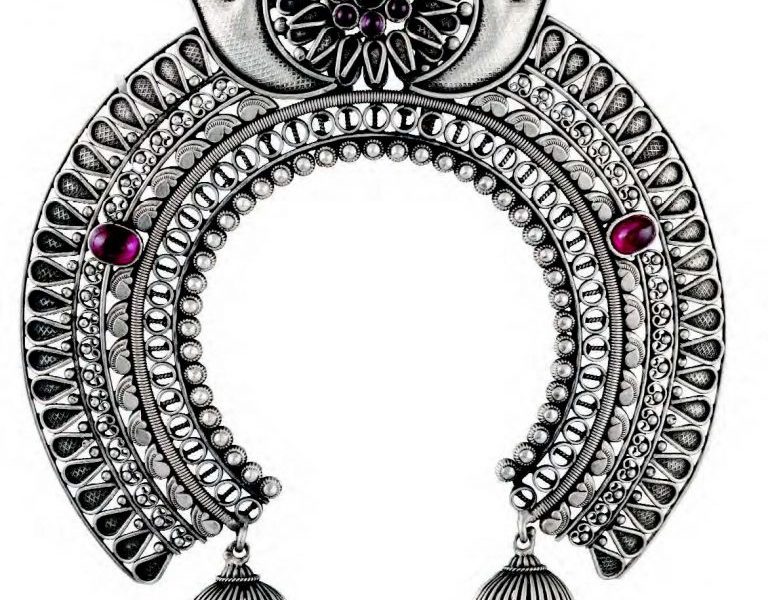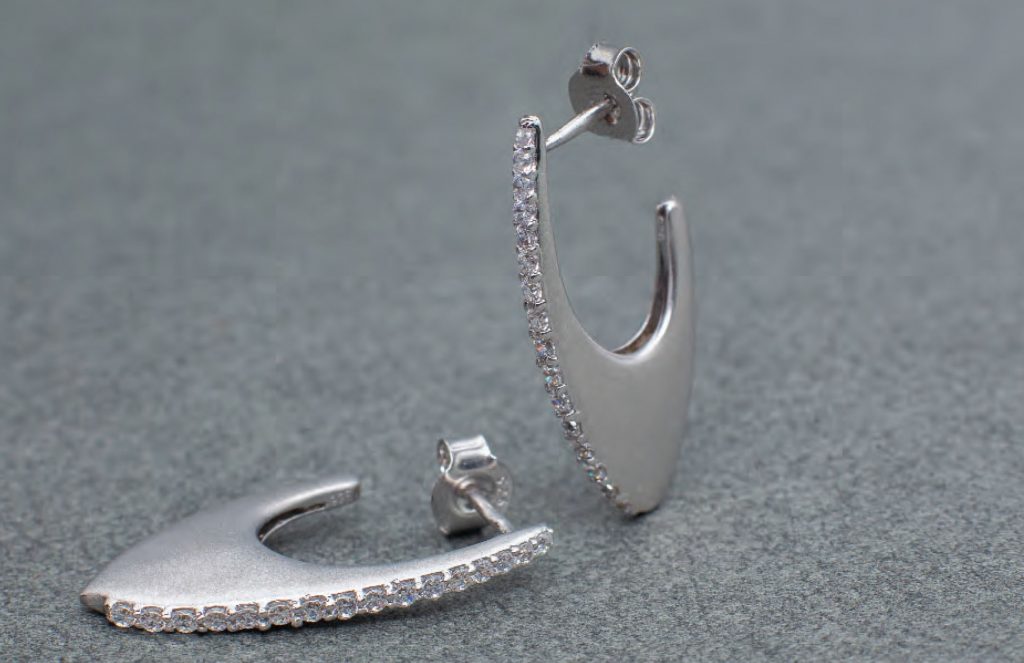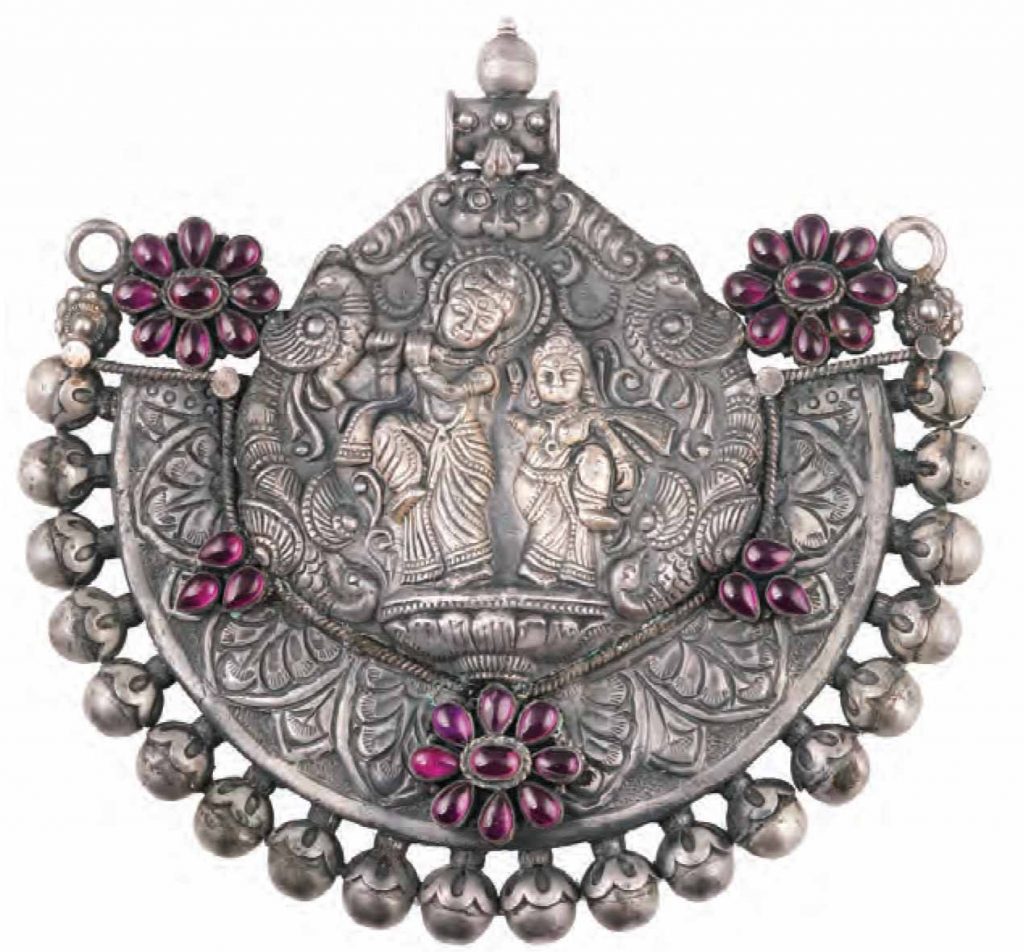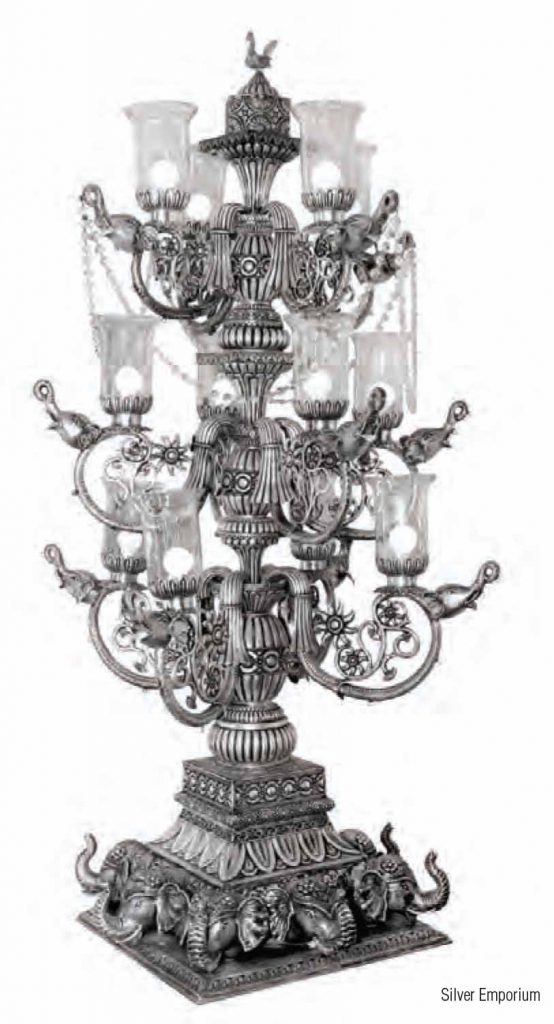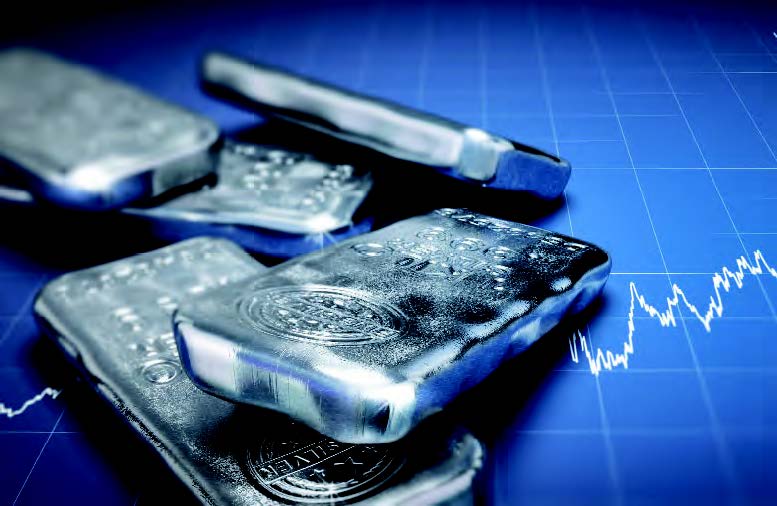Silver is gaining ground across the globe because of two main drivers – first, it’s precious yet affordable; the ‘democratic’ metal is well within everyone’s reach. Silver prices have stayed stable for a couple of years and are nearly eighty times lower than the price of gold. Second, silver is versatile – it correlates to fashionable, pret wear jewellery, which is an underlying lure for today’s generation, and it also fits into the slot of high-end designer jewellery, which is an investment and a keepsake. But first, let’s talk some figures: India is a huge exporter of silver jewellery and silverware. Silver bullion imports rose 36 per cent in 2018 to 6,958 tons, according to the World Silver Survey 2019 report, published by the Silver Institute. Industry experts estimate that the figure may have reached close to 7,000 tons in 2019 as well.
Ram Babu Gupta, convener of the Silver Jewellery Panel Committee, GJEPC, notes, ‘As exports have grown by about 20 per cent, it can be estimated that the import of silver bullion will grow by 15 per cent to 20 per cent.’ In 2019, the figures could hover around 7,000 tons. India is the third largest exporter of silver jewellery in the world, according to a GJEPC analysis based on UN Comtrade 2018 data. Abhineet Boochra, spokesperson and director of Sangeeta Boochra, a jewellery export firm, notes, ‘We estimate the increase in import to be around 20-25 per cent. However, the import bill in the last quarter of 2019 has increased from the October quarter. This means, in the last quarter, huge quantities are understood to have entered India. Indian consumers buy silver jewellery and investment grade bars and coins. Traders bought more silver this year than last year as a “tactical” purchase, which eventually has increased the imports volume. Excessively high price of gold, due to huge depreciation of the rupee, has also diverted precious metal buyers towards silver.
There was arbitrage demand for silver import due thirds of global consumption. ‘The annual increase in India was largely due to a rise in stock building from regional and national retail chains as consumer demand gathered pace, and a jump in exports, which more than doubled in 2018,’ the survey noted.
TAPPING GREENER PASTURES
The United States of America and the Middle-East are the two major regions that register a major demand for silver jewellery. However, realizing the untapped potential, Indian silver exporting companies are also looking to penetrate markets such as China, Singapore, Sri Lanka, the Middle-East, Russia, Hong Kong, the Philippines and Australia. Rahul Mehta, managing director, Silver Emporium, Mumbai, believes that apart from the established markets, countries such as Hong Kong, the UK, Italy, Germany and Africa can be good export destinations. ‘Some regions offer great opportunity for contract manufacturing as the cost of labour for handmade jewellery is very low in India and we have highly skilled workers,’ he notes, adding that his company is targeting China, the Middle-East and Russia.
According to Vivek Shah, owner and creative director of Karma Designs, Ahmedabad, a major silver jewellery export house that also has a domestic brand, Vega Vaan by Karma, smaller nations like Monaco, Switzerland, Fiji, etc., with more spending power can be options worth looking into. Shah’s major export markets are America, Japan, France and Spain. To boost exports, he believes that it is crucial to have more buyer-seller meets for silver in India as well as in key cities like New York, London, and Los Angeles, to promote Indian exporters. ‘Indian silver jewellery exporters have a strong design database supported by quality manufacturing operations.
THE WAY AHEAD
The room for export growth is tremendous, according to Rahul Mehta, managing director, Silver Emporium, Mumbai. However, he recommends that it is imperative to ‘market handcrafted Indian silver jewellery on a global platform and trade shows. I believe that we have an edge as our jewellery or silverware is handcrafted.’
Ram Babu Gupta adds, ‘The government should provide financial help to undertake generic promotion of silver jewellery in various international markets. Identifying major silver jewellery manufacturing clusters and creating shared manufacturing facilities to improve the quality would help empower our MSMEs to undertake exports. The MSME units manufacturing silver jewellery should be encouraged to participate in overseas foreign exhibitions by offering them booths at nominal prices, as the silver jewellery companies have to pay the same cost for a booth as the diamond or gold jewellery company is paying at an overseas exhibition. The government must earmark a fund to subsidizing such participation charges for silver jewellery manufacturers, which can be routed through an export promotion council. Silver jewellery should be considered a non-precious category from the freight point of view; in fact, the charges applicable to silver are the same as gold and diamond.’
On the home front, Mehta advocates upskilling and training MSMEs to produce globally acceptable finish and quality. ‘Sharing knowledge on alloys, conducting practical workshops with skilled trainers, and sharing global trends with manufacturers to develop collections is the way to go,’ Mehta suggests, adding that curated study tours abroad as well as in India for MSMEs would be an eye-opener for them. ‘Small and medium-sized manufacturing units should be allocated booths at trade fairs at subsidized costs.’
Lauding the GJEPC’s efforts to have a Designer Gallery at IIJS Signature, Mehta says budding entrepreneurs and designers should be given the chance to showcase their creativity at such mega shows. ‘This is a confidence-building exercise that will ultimately boost our exports.’ To boost exports, Ram Babu Gupta recommends that steps need to be taken by the Indian government to equate the prices of silver in domestic and international markets, which are presently way too high due to a high import duty. ‘The duty drawback and replenishment available to an exporter is not giving full relief in lieu of duty drawback and actual duty difference on silver bullion. This initiative will boost the exports of silver jewellery from India, including exports of plain silver jewellery, for which countries like China and Thailand are our major competitors.’
He continues, ‘The scheme for refunding of all duties and taxes to a foreign tourist making jewellery purchases while in India should be rolled out immediately to make India a shopping destination like Dubai, Thailand, etc. Also, the baggage rules should be simplified for foreign buyers to enable them carry goods, bought during their visit to India, without any hassle.’ Abhineet Boochra notes, ‘Increasing duty drawbacks by the government is one of the major steps towards boosting exports of silver.
‘Jewellery parks should be established which help a jeweller work in an organized environment, and that, in turn, can improve the quality and durability of the product. This would give an edge to Indian goods in the market. ‘Customs duties on jewellery machines should be reduced, as that would help India produce high-quality jewellery at par with China or Thailand, which are currently the market leaders in finishing and quality. ‘Seminars and know-how sessions should be conducted by the GJEPC domestically and globally to educate jewellers on various aspects of the trade.’
THE DOMESTIC SCENARIO
Back home, silver jewellery is becoming popular not just for its lower rates, but also because the metal is the go-to option for modern-day jewellery designers. Trendy designs and silver almost go hand-in-hand.
Mehta says the Indian markets are warming up to silver items in categories such as home décor, furniture, personalized gifting options and others. ‘New-age consumers prefer silver jewellery for daily wear and occasions. The price points as compared to gold are lower and they have the option of changing their jewellery more often.’ The current crop of designers are giving a contemporary look to silver jewellery and gifting articles and have clearly created substantial demand for the white metal. Surveys done in this regard have revealed that youngsters in particular have started appreciating silver more than gold because the current silver jewellery designs are so much more chic and in sync with the aesthetic sensibilities of today’s generation. In India, gifting coins and silverware for religious purposes and as decorative home items is popular. Silverware demand has steadily grown in the range of 15-20 per cent year-on-year. Indian exporters opine that there is huge potential for this segment to grow over 30-35 per cent consistently, but this will require education and promotion.
As for hallmarking, Mehta comments, ‘I strongly recommend that silver hallmarking should be made mandatory in the country. This will bring trust and help the market to grow as silver has huge potential.’ Ram Babu believes that to begin with, hallmarking each piece of silver jewellery weighing 30 grams or more should be made mandatory, as hallmarking smaller pieces would not be viable. ‘However, the same can be extended to smaller pieces in future or they can be marked with the percentage and the maker’s stamp,’ he adds. Vivek Shah adds, ‘While it is important to make silver hallmarking compulsory, more awareness and promotion needs to be done to educate the public about purity standards and difference in quality.’

